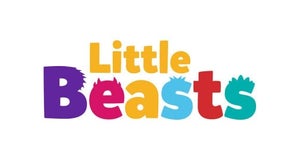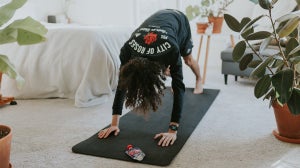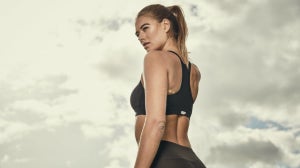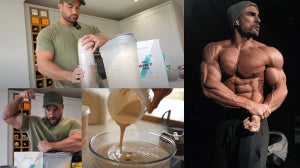
"The one question I get asked about the most without doubt is ‘how can I get a great six pack?" says Kirk.
"I have seen thousands of videos, books and 'wonder machines' in my time all guaranteeing 'the perfect abs' if you buy their product. In truth most of them are a load of rubbish generally aimed at people who through no fault of their own don't have the first idea about correct training/diet and are merely lured into buying it because of the chiseled six pack of the model on the front of it."
"Before I go about giving my advice on abs training one thing I must point out is you CANNOT change the genetic appearance of your abs. Anyone who says you can is lying. They are pre-defined from the moment we are born. But we all have them, we CAN make them stronger and we CAN make them more prominent through exercise." says Kirk.
"I do loads of sit ups, but I still can't get the abs... This is totally irrelevant in your quest to get them if your body fat isn't low enough. You could be doing a thousand sit ups everyday for the next year, if you are a guy with a body fat of around 13% or more will never have a ripped six pack."
"I would suggest taking a look at firstly your diet, the likelihood is you are either eating more calories than your body needs or your diet isn't healthy enough. Having said this, I am going to disagree completely with the 'Abs are made in the kitchen' quote. If you are a genetic freak and one of the lucky few who never trains them, yet still possess a symmetrically perfect set of abs of equal thickness then what I'm about to write doesn't apply to you!" says Kirk.
Exercise 1 - Exercise Ball Crunch 3 x 8-12
I want you to really think about your abs while you lengthen and then contract your core. On the way down stretch your abdominals as much as you can before powering up to a 45 degree angle. At this angle pause, and squeeze your abs as hard as you can. Make sure that you exhale before the movement to increase the ability to squeeze your abdominals as much as yo can. Everything should be slow and controlled here.
Exercise 2 - Decline Bench Crunch 3 x 8-12
Tuck your legs into a decline bench, but do not point your toes to the ceiling, instead point them forward. This will allow you to not tense your legs during the movement and to place the focus on your abs only. Place your hands behind your head, or across your chest is a bit easier for beginners, then lower yourself as far as you can without touching the bench, then come straight up, again to 45 degrees. Same point with the breathing again, exhale before the movement to allow a greater squeeze.
Exercise 3 - Incline Bench Leg Raise 3 x 8-12
Next up, using a lying decline bench, grab the pads and straighten your body out, not allowing your feet and legs to touch the floor or bench. From here you will raise your legs, keeping them together, to the ceiling, slowly and in a controlled manor. Once here, with your bum off the bench you will lower them back down as slow as possible, again keeping your legs and feet off the surfaces below.
Exercise 4 - Medicine Ball Decline Twists 3 x 8-12
"If you do not have a decline bench you can use a sandbag or partner to hold your ankles down and remain sat up in a 30 to 45 degree angle throughout the movement. Follow your head round with the plate and make sure you squeeze your obliques for a split second on each rotation just before the weight touches the floor. I always prefer twist movements as opposed to side crunches for obliques to avoid a blocky waist." says Kirk.
Exercise 5 - Ab Machine Crunch 3 x 8-12
"By the time you come to this last super set your lower abs will be torched! This is exactly what you want as for me as the lower abs are the key to any great six pack but also the hardest for many to achieve. The weighted abs crunch will allow you to over load your upper abs more than any other exercise so to put it bluntly can lift more weight!" says Kirk.
Exercise 6 - Hyper Extensions 3 x 8-12
"It’s crucial you counter act any heavy abs training with lower back work though to avoid lower back injury and muscular imbalances. Raise upper body until hips and waist are fully extended. Lower body by bending hips and waist until fully flexed." says Kirk.
Take Away Message...
"As I've said diet and body fat are so important in achieving a good six pack, but if you want a GREAT set of abs you must train them and treat them like any other muscle. If you see a group of guys on stage or on the beach of equal muscle structure it's the guy with the best abs that will stick out like a sore thumb."
"Train them heavy and ALWAYS start with lower abs/core. I am yet to see anyone with better developed lower abs than their middle/upper abs. Just like you would with any other muscle group, the primary focus should be on your weakest part of the muscle, as the key to a great physique for me is proportion."
"Around 70% of any abs workouts I do would focus on lower abs/core before moving onto upper abs and of course my lower back to maintain a correct posture. Although rep ranges may vary slightly, I find using a rep range of 6-12 reps is best for lower abs/core, 15-20 reps for your obliques and 10-15 for lower back." says Kirk.
"Your abs are a fast twitch muscle fibre so treat them like one, you do not to do hundreds of sit ups. As the rep range is low, constant tension, correct technique and a powerful mind to muscle connection is crucial throughout all movements, especially when targeting stubborn areas such as the lower abdominals."
"My final advice is don’t over complicate and do the basic moves right if you want a thick proportioned six pack." says Kirk.
Follow Kirk on Instagram
Follow Kirk and all of our guys on Instagram for the latest action from Myprotein all over the world.
Our articles should be used for informational and educational purposes only and are not intended to be taken as medical advice. If you're concerned, consult a health professional before taking dietary supplements or introducing any major changes to your diet.








